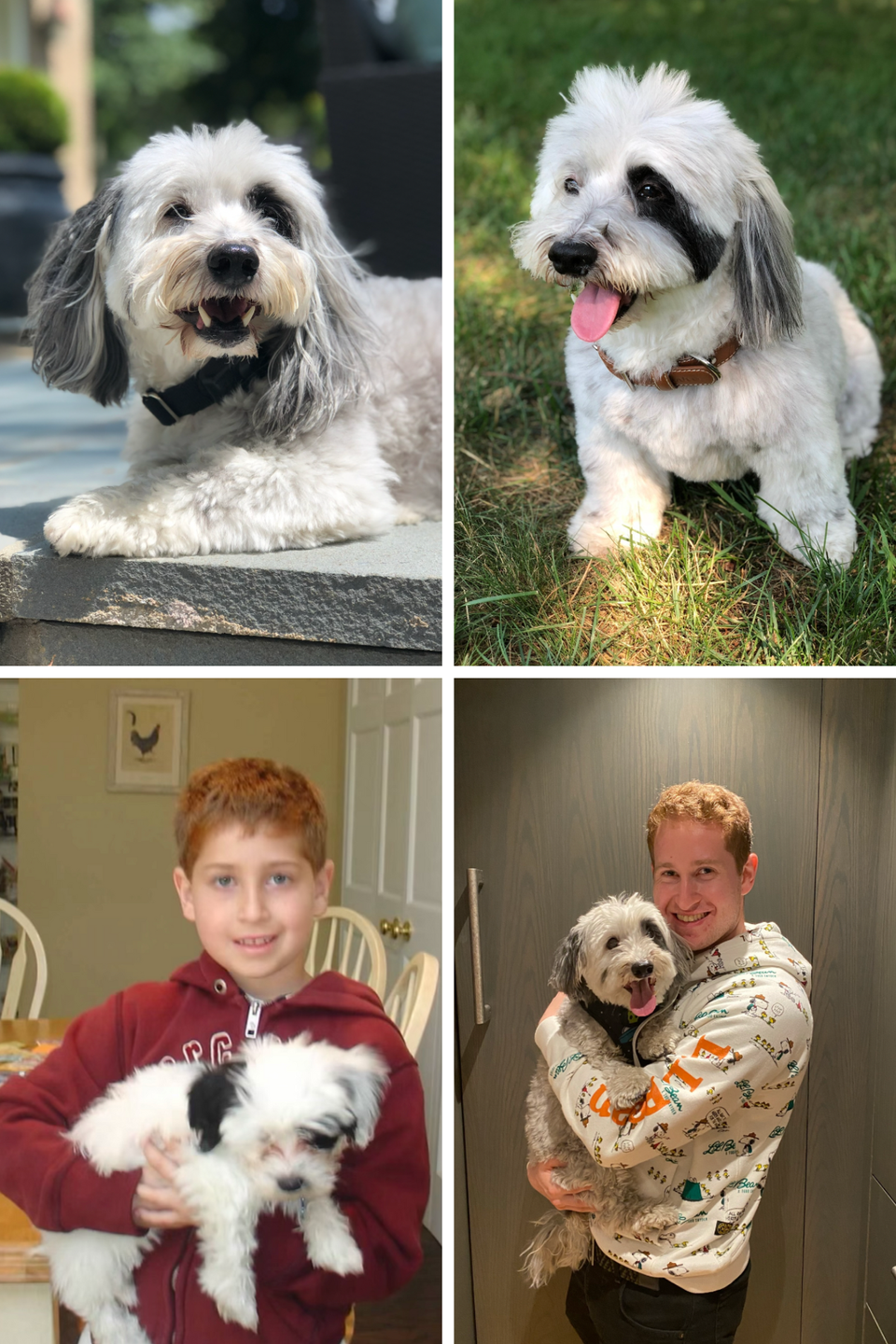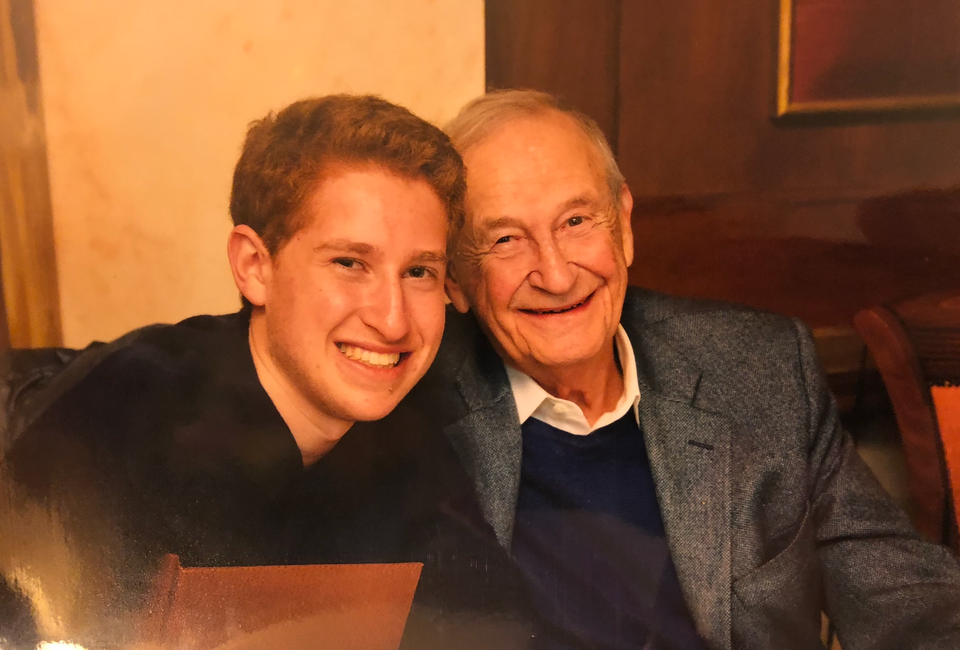Dear Footprint Family,
June was another great month for Footprint. We now have several hundred thousand (not yet portable) identities in our vaults. The company is on the verge of signing another six-figure ACV deal and separately our first digital account opening deal, which will bring us inside multiple FIs to diversify our customer mix. Footprint is now certified PCI Level 1 compliant. We also closed our partnership with Incode for doc scanning verification, and launched our app clip and auto-capture for web-mobile.
I’d be remiss to not mention some incredible work by the team this month. Elliott spent multiple weekends making Footprint’s vaulting have robust features for proxying and able to safely and smoothly process 1200 requests a second at peak. Rafael and Ahsan did incredible work on our app clip and auto-capture to make Footprint’s document verification experience ready for an inflow in July and August. I am so grateful to work with such kind and brilliant people.
Hope everyone has a great month of July!
Essay
I always looked forward to seeing my grandparents on Long Island. There was a pinball machine in the basement and a bucket of quarters. Losing was a loose term—you could always play again. For those who have never played, this is how wikiHow suggests doing so in 14 steps.
I. Put a quarter in
This month was initially going to be an essay about the Spanish Empire’s silver mining in the Bolivian city of Potosi and modern cobalt mining in the Congo. I was very excited to nerd out about history and try to weave that back to our little company here.
In light of Plaid’s June 8th announcement about entering the one-click KYC arena though, I decided to push back my exposé on exploitative mining practices throughout history.
II. Study the layout of the machine
Tomorrow, and Tomorrow, and Tomorrow (NYT synopsis here) is the story of Sam Mazer and Sadie Green. The tale spans 30 years. The novel encompasses platonic love, company building, and an interplay of the past and future.
Sadie and Sam build video games. Fantasies, better worlds, escapes from reality. They live through a juxtaposition of their digital world with unlimited lives, and their physical one which grants no more than one. As kids, they would replay Mario Kart until they had the perfect sequence complete. No hiccups. In life, they tried to find the upside of unlimited hiccups. They controlled their characters in the games, and wrote the code of the NPCs. In Cambridge and California, they try to control themselves.
III. Pull handle to catapult the ball
I wrote my investor update last November about how Footprint is not a new idea. Portable identity is an idea as old as the internet. No one owns it; we all just have our own idea of how to get there. The only people who own the idea are people on the internet who deserve to own their data.
Sam and Sadie played Oregon Trail in their youth. Sam’s final game 30 years later would be based on it. No one owned the idea for an adventure game in the American West.
IV. Use the flippers to hit and shoot the ball
We Expected This. I am excited that we are on a path to a million portable identities, but have long believed that going from one million to 10 million PIDs would be much tougher. We would be bound to be competing with massive companies who saw the opportunity. Not because they saw us—I doubt we are on their radar. Just because the technology is here and it makes sense. The prize is too big. One Plaid customer even said he has been begging them to release this for a decade!
Sadie did not expect outcomes others could see well in advance. She knew her first love interest in the book was married from an article she had read; she conveniently just pretended that the marriage mentioned could have ended. Later on, she knew she was talking to a long-lost friend in a virtual game for over a year; she once again found it commodious to believe it could have been anyone.
This is not to give Footprint points over Sadie in my own fictional game. Nor is it to say we are any brighter as individuals. I like to pretend that many things can be expected, even though there is no logical or logistical way for them to come true. Part of me thinks I could help with this cobalt situation. I have feigned surprise at outcomes that others—myself included—knew were coming. But, as I have written before, I do believe we have what we want. I’d rather believe things in my personal life that may bring me happiness and escape for a moment even if I know that debt will come to be collected.
Footprint is different. We’re not prescient. But if I am to write an experimentally partitioned update about a book on an important business matter, I will draw the line that we do not live in pages. Our responsibility to do right by our team and backers we take seriously. And this means not deceiving ourselves.
V. Use the bumpers to get points and bounce the ball
We have a ton of respect For Plaid. There is nothing but admiration for a company that has changed the fintech landscape as much as they have for as long as they have been building. A great company that transformed an industry. We respect all competitors.
I’ve long said I don’t view one-click/federated identity companies today as competitors. This outlook is my same sentiment toward Plaid’s one-click product in many ways. You can’t compete with something that has little market share, and the many-click space has about 99.99999% of it for KYC. We compete with companies like Alloy and Cognito for IDV and VGS for vaulting. That hasn’t changed. Sure, it feels a bit more urgent to get to a network effect first. But what startup doesn’t operate without urgency?
This does not change our roadmap or timeline by all that much. And it’s why this update below is not specifically about Plaid, but about anyone who wants to join the both of us in trying to make one-click have more than .000001% market share.
VI. Watch the display on top to see what to aim for next.
The first one-click does not matter without the first verification. We’ve long spoken about our goal to remove the toggle between fraud and friction. That cannot just be done by solely removing friction. In fact, we’ve seen what happens when you just remove friction: rampant fraud. It’s essential that the fidelity of any verification before an identity is made portable is done to the highest degree of accuracy. This is why we triple bind identity and are close to 100% confident that we have a direct match for 82% of the population that is passkey + app clip/instant app compatible. There is a reason our first and third customers came from a company that utilizes reverse look-ups: accuracy matters because the inverse is costly fraud. And the only thing worse than fraud is one-click fraud.
VII. Only use one flipper at a time.
The one-click should of course be kept in mind when building the first standard verification. It’s why there may be a lot more than what meets the eye behind our flow. Footprint’s product is not trivial. From day one our goal has been one-click, which has meant building an incredibly sophisticated architecture to do just that. Not only that, but we built a security company first so that user data would be stored on behalf of our customers inside our vaults. Footprint starts off with legal grounds to make identity portable; new entrants without roots in security will not immediately have the same playbook. This is also why our top public goal has been to build up trust with people. It is why I try to write vulnerably in our public updates; if you’re going to trust us with your identity, you deserve to get to know us as people.
There are also a lot of edge cases and infrastructure decisions involved to do one click right in year one, which may become difficult to change a decade later. Our vault is updatable by both end-users and the products they onboard to, resulting in Footprint tracking the holistic lifetime of each piece of the identity data. We have a comprehensive view of how personal data changes as time goes on, who has access to it at any particular point in the data’s lifetime, and how to dynamically collect and confirm pieces of the identity data as the user one-clicks onto new products. This entire data model works seamlessly with our vault, vault proxy APIs, and our dashboard console. This was a system designed from the start to support all of these parameters.
Conversely, any company trying to build one-click not from the ground up will have to go about reversing engineering changes that have been put into practice for years. And, I do believe (perhaps naively) that it is difficult to build a brand of trust around PII if your ethos from inception has not been to securely store information.
VIII. Rest the ball on the flippers to slow the ball down.
“The myth, the narrative, whatever you want to call it, was always of supreme importance to Sam.” No one asked for this tome. Oftentimes simple answers would suffice. I feel the need for others to see the game in the setting I describe.
IX. Learn where the ball goes with different parts of the flipper.
KYC built to become portable doesn’t matter without security around the PII. Footprint is featured on AWS’s website for what we have built on nitro enclaves. Companies need to access this data, and we’ve built a business around being the most trusted party to do just that. It’s why we have customers who replaced VGS with us, and why most of our customers migrate over previous records they’ve onboarded into our vaults. We don’t want to create extra copies of personal data.
One-click doesn’t matter without security around accessing it. We use passkeys because they are the most secure way to re-authenticate users. Since Google implemented them internally, they haven’t had a single phishing attack. Per request, we have plans to expand our passkeys as a lightweight auth layer (not full CIAM replacement) for our customers for login.
Few companies—at least that I am aware of—have pivoted to become security companies. If you’re not a security company, you’re not storing the source of truth data for KYC tenants. You’re creating extra data sets and not solving their problems. If you use SMS verification instead of passkeys, you open up a world of sim swaps and phishing attacks to get access to someone’s PII and the ability to create unlimited accounts under their name.
X. Practice backhand shots by hitting the ball near the top of the flipper.
Alex and I had a chance to go on the great Packy McCormick’s podcast last August. On it, I said one million PIDs was escape velocity one, and 10 million was escape velocity two. Both numbers were extremely arbitrary. The truth is, no one knows. Not all PIDs are created equal. I do think localized network effects at larger companies will present themselves first (and mathematically do exist in that range), but bigger companies move slower.
This is all to say one-click is not possible with a good enough product to get a network effect. I’d emphasize the word “enough” in the preceding sentence. The best product does not always win. Advantages in distribution, brand, and luck all play a role.
It may sound like I’m back peddling. Maybe I am. In my mind I’m extremely consistent. None of our customers bought our product due to the network effect, but it was worth externally talking about as a differentiator. Now that one-click is a shared goal, I seek to emphasize the product differences innate to enabling one-click in a future timeline. Now that we have a more common future vision of one, closed-loop ecosystem for identity, I seek to highlight that there are many ways to create that system with different levels of likely efficacy at scale.
XI. Nudge the machine to change the ball’s course.
I still suspect Stripe to make a play in this space. My gut is they care more about unleashing Link to build a moat in ACH pay to (brilliantly) protect their card processing business in case bank pay really takes off. Their identity team should eventually be a part of it, just like their financial connections team with their product competitive to Plaid.
We have long been planning to release an ACH verification product to unite financial onboarding and make it all portable. It’s not a hidden vision for anyone. It just makes sense.
XII. Save the ball by quickly hitting each flipper.
Many perhaps forgot about the Plaid announcement until this update. This does not make our jobs easier. But part of me loves it. Perhaps it is my glorification of the narrative. But I do believe company building should be hard. The steps forward needed to achieve a big vision should be rationally impossible to connect.
To me, startups should not just feel like underdogs, but each moment should make you feel uncomfortable. For each question answered, two more should appear. Each new set is a bit daunting, but also a validation of the last dot you can see coming into a connected sequence.
XIII. Pass the ball from one flipper to the other.
“But this was classic Sam—he had learned to tolerate the sometimes painful present by living in the future.“ The future is yours. No one has written over your plan yet. And Sam was not the only protagonist to share in this concept. “Sadie, like Sam, had a gift for imagining herself in the future.” The two quotes struck me in their kindred idea yet contradictory framing. Sam is depicted to be escaping into the future. Sadie has a talent for dreaming. I’m not sure if there is actually much difference between the two. Her dreaming was not without reason, reason not dissimilar from Sam’s vice to escape. “Sadie had willed herself to be great: art doesn’t typically get made by happy people.” The only contrast between Sam and Sadie would be the result, but as co-founders of their gaming studio, their outcomes were linked. Do we unlock that narrative change only if we are successful in our mission? At what point does fleeing the present become the novel of a dreamer who rose to the moment?
For as much time the protagonists in a book called Tomorrow, and Tomorrow, and Tomorrow paint their impending histories, much of Gabrielle Zevin’s novel is stuck in the past. Their past. “That’s the gamer in you, trying to figure out how you might have beat the level. My brain is treacherous like that, too. But there was nothing you could have done, Ant. The game wasn’t winnable.” In fact, a lot of the book is spent discovering silhouettes of the past. Somehow a book that traverses 30 years rarely seems to be in medias res. The floating narrator moves between epochs in the characters' lives with ease. It’s a novel about builders. Lovers. And what shaped them. A visceral voyage with the fleeting nature of realizing the incalculable things out of our control. Of realizing that in real life, we can’t restart a level.
XIV. Stop the ball by hitting it as the flipper is at the top of its movement
Journal Entry
“When I see you again I’ll be on guard.” The Chainsmokers make me nostalgic. I love nostalgia because it’s my lesser-used vice to escape the present. Normally I live in the future. I’ve learned I am rarely in the present. My mind is normally calculating where the moment will land me in the future, or I have too much armor on from yesterday I can’t feel today’s weather on my skin. There are moments I realize I’ll never let myself be happy in my present despite it being what I said I wanted in the past. And perhaps that’s why old days which I so hated beckon me with so much warmth. Perhaps they give me love I don’t give myself because a younger version of me thought this would make him happy. And perhaps that’s why I love and feel so protective over that younger kid I imagine when I’m nostalgic. I want him to keep the illusion. I want him to think that he’s happy now. Optimism has been my superpower, but it’s the chosen ability of a machinist. One who can paint castles in his mind and yet when he enters them only see bare walls.
Not a Journal Entry
Entrepreneurship can be about moving goalposts as soon as you reach them. Increased self-confidence belies moments that lack self-love. I’m an optimist. A hope merchant.
XV. Game Over. Play Again?
So what will we do about Plaid? Company building can feel like a game. Sometimes it has a new obstacle. Here, a new character. A higher difficulty level.
I’ve become more introverted. Holiday weekends become an opportunity to stay in NYC when everyone else departs. Catch up on some sleep and read. This holiday weekend, I finished the book on cobalt mining in the Congo. The scale of it saddens me. The thousands of children forced to work in the mines to produce the ore which powers many parts of our economy today. And the similarities of it to Belgian atrocities in the Congo for ivory, and then rubber, and then copper (where the cobalt is found today). My game can restart. Sadly there have not been enough quarters for that country.
So what will we do about Plaid? New competition in general? I think what we always do. Build with haste great products that solve real problems for our customers. Work around the clock to delight our customers. Control what we can each day, trust how our roadmap leads to our vision, and continue to execute. Put quarter in. Study the layout. Pull handle to catapult the ball.
Goals From Last Month
Launch App Clip to prod (early access in June)
- Complete
Launch Incode doc scan to prod
- Will be done end of week
Launch advanced decisioning workflows (first-party integrations with Alpaca and Apex)
- Done
Meaningful work on analytics dashboard
- Pushed back due to other priorities
Product Releases From last Month
Release of App Clip
- Auto-capture on web-mobile
Extracted OCR Data in Vault
- When you use Footprint’s embedded flow for identity verification and enable Document scanning (like a Passport or Government ID), Footprint automatically performs OCR to extract data from the document and securely vaults the fields. This lets you securely decrypt or vault proxy extracted document fields (like a passport or license number) using the same vaulting APIs you’re already used to.
Redo KYC (allows customer personnel to re-trigger onboarding for individuals right from the Footprint dashboard)
- Request document (a way to step-up a user and request say a drivers license)
SDK for Expo
- Expo is a powerful open-source platform that allows developers to build, deploy, and quickly iterate on native iOS, Android, and web apps from the same JavaScript codebase. It provides a set of tools and services for building applications that target a wide range of platforms with a single codebase, making the process of app development faster and easier. Footprint's integration with Expo is designed specifically to leverage Expo's unique environment
- Full IAM support for API keys
Hires from last Month
Filipe Botti—Mobile Engineer
A seasoned software developer, Filipe boasts a vibrant 13-year career, with the last years devoted to mobile development, having a great understanding of React Native and native platforms, iOS and Android. His fervor for mobile technology played a significant role in his contributions at Kyte, where he collaborated closely with fellow team member Rafael Motta in developing web and mobile applications. Upon transitioning to the surfer team, he became the go-to mobile developer, providing essential support and implementing enhancements and new features for both platforms.
Peter Sweeney—Growth
After graduating from Wharton in 2019, Peter started his career at Goldman Sachs, on the tech equity capital Markets team in the investment banking division. He left Goldman in 2021 to start a company (ALAO) in the retail investing space. He served as the co-founder and CEO. He raised funding, grew the team to five people and brought an app to market, generating over 5,000 downloads and 20k followers across social platforms.
Where We Could Use Help
Open Roles for Recruiting
- Backend Engineer
- Ideal profile: Skilled in building performant, scalable distributed systems. Experience in Rust + payments tech is a huge plus.
Company We Are Looking for Intros To:
- Possible Finance
- Upgrade
- Turo
- GetAround
- way.com
- Stockpile
- Attain/Klover
- Rently
- Outdoorsy
- Flex
- Apartments.com
- DeferIt
- Urbansitter
- Lower





